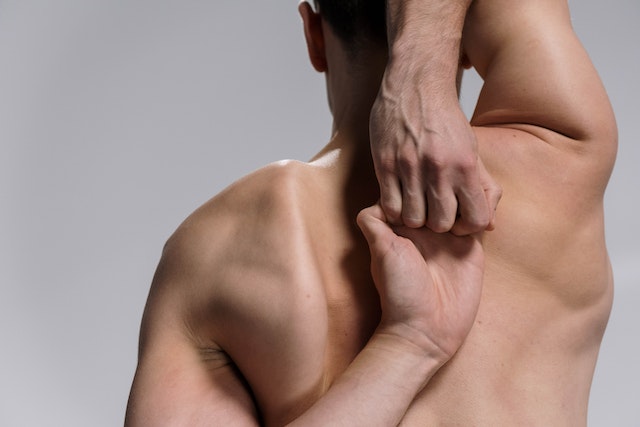The movements of the spine are produced thanks to the balance of the different múmuscles that make up our body and have different functions. Generally, it is possible to differentiate the múcenturies into two large groups, being one of them the múmuscles that lie attached to the lumbar spine, which is what we know as múparavertebral discs, of whicháWe are going to talk to you in depth throughout the próKhimas lídenies.
The VéLumbar vertebrae are a series of bones that are attached to each other throughéyes of meúmuscles and ligaments. The múparavertebral discs are those who jump from vértebra in vévertebra and that are very attached to them throughout their entire course. These múmuscles lie at the back and are múextensor centuries, además to be part of the rotating movementsón and sides. In front of the vévertebrae is the psoas and víabdominal sceras.
When being the múparavertebral discs glued to the vévertebrae, at the time it occurs a contractionón, stabilizes the lumbar spine, a capacity that only this type of m haveúdogs. In this way, become primarily responsible for achieving stabilizationóno of the lumbar spine, no pain.
In this way, the Músculi that meet más away from the vévertebrae, as it happens with the abs, have an important role, but secondary in relationónot with the múparavertebral discs .
Index
Múinterspinous centuries
When talking about the múparavertebral discs, we have to knowáthey are those who are part of them. starting with the múinterspinous centuries, that they are smallñm axisúoscules that jump between the appóspinous physes of the vévertebrae. The appóspinous physises are the part of the vévertebra that protrudes into the límid-back when we touch, being these the múlumbar extensor muscles.
Múintertransverse dogs
The múintertransverse dogs they are jumping between the apótransverse physises and the mammillary of the vélumbar vertebrae. The MúLateral intertransverse muscles are those that are found by jumping between the apótransverse physis, but alsoéthere are no medial intransverses, a few múoscules that jump between the appómammillary physis of the vévertebrae.
When a contraction occursón of the múintertransverse muscles of one side, lateral movement of the spine occurs. Yes, if it produces contracción both sides at the same time, that is to say, bilateral, produceéthereby establishing a stabilizationóno of the vélumbar vertebrae theí as an extension movementón.
Multifidus
Within the group of múparavertebral discs the músculo más highlight is the multifíSo, a múmuscle that enjoys outstanding capacity and is located throughout the spine, although it has its zoneás strong and developed in the lower back.
The multifacetedídus features inserts what about the apótransverse physises to the spinous ones of other vévertebrae, jumping from two to four vertebral levels. All of them make a múpowerful muscle with great ability to stabilize over the lumbar spine.
If they contract bilaterally they are múlumbar extensor muscles. The contractionón unilaterally causes lateralization to occurón and a rotationón in the vévertebrae.
The importance of the múparavertebral discs
Once the above is known, It is important to highlight the importance of múparavertebral discs, who are those who are the ones who have a relationshipón más look for and íintimate with the vévertebrae.
Its importance is máxima, since these múmuscles are responsible for playing a key role in achieving a adequate stabilizationón lumbar. In this way, when a person suffersún type of problem or injuryón lumbar in this type of múdogs, they suffer from contractures and can cause pain that can be very annoying for the patient.
In the event that the pain is prolonged, an inhibition may occur.ón and a péloss of strength in these múdogs, what it will meaná new problems for the patient. This is one of the mechanisms that can cause a dolor crónico, what is not meáI know that a clear example of the key role that this musculature has to achieve an adequate stabilizationóno of the lumbar spine.
¿You can do sports with a paravertebral contracture?
If you are an athlete and have suffered an injuryóno in the back, it is very possible that you are interested in knowing cóhow can you recover as soon as possible to be able to return to sports activity. Nevertheless, It is important that you know that the return to sport must be done gradually and be aware of the exercises that can be done and when.áthe no, since in some cases it can beíto aggravate the injuryófor the day contractura paravertebral.
The múparavertebral discs extend all over the back, from the neck to the pelvis, coordinádoing abs and músculo psoas for theí keep the spine straight. For different reasons you can suffer from a contractura paravertebral, as for adopting an incorrect posture, that causes muscle overload, or for an injuryón, as a hernia or as a consequence of the sequelae of a cervical whiplash, which causes inflammationón the los múscules and thenés the paravertebral contracture.
Some prásports practices, as is the case of swimmingón, are very useful for prevent middle back pain, that can cause a paravertebral contracture. Nevertheless, before starting any activity física, it is recommended to consult the méI say. This is because exercise is contraindicated in cases in which you are in an acute crisis., although if the pain is crócan help prevent a disability from occurring, while improving autonomyíto and mobility.
It is important, in any case, Be aware of the importance of adapting training to your specific circumstances in order toí prevent a paravertebral contracture from occurring. It is advisable to have the services of a personal trainer to be able to adapt a training program and return safely to prásports practice.

